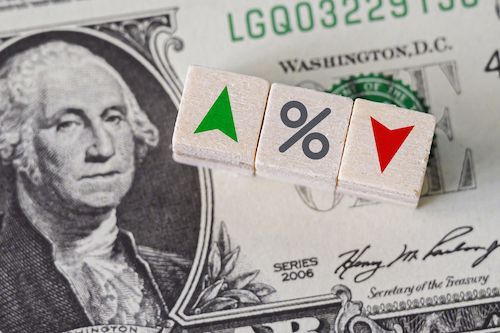
Will the Fed Reverse Course in the Fall?
There seems to be increasing speculation among analysts that the current Fed tightening and interest rate raising program, even if the latter proves to be more aggressive than Fed chair Powell has recently suggested, will be insufficient to even start to bring inflation levels back down. If this indeed proves to be the case and even above-expectation interest rate rises at the July and September FOMC meetings don’t seem to be stemming the inflationary tide and a serious threat of recession looms, or may even already be apparent, will the Fed reverse course and start easing again?
The dangers of such a course are immense of course. Such a program would saddle the US public with a continuing high level of inflation for the foreseeable future. Would that indeed be preferable to undergoing what could be a particularly nasty period of economic recession? Neither option seems to us to be particularly appealing, but we suspect that this may indeed be Hobson’s choice. One or the other is looking to be inevitable.
If we look to data releases for any degree of comfort, these will probably not be forthcoming.
The next inflation measure to be released is the Personal Consumption Expenditure (PCE) index release, due out on June 30th. The PCE is the Fed’s preferred inflation measure and tends to come in lower than other inflation data, but it looks unlikely to show any significant trend one way or the other and thus may not provide any guide to the central bank’s next rate increase move at next month’s FOMC meeting.
Probably carrying more weight is the Consumer Price Index (CPI), due out on July 13th.
If this comes out at a similar level, or higher, than the June announcement of an 8.6% year-on-year rise, which we fear it might, the Fed will be under pressure to impose another 75 basis point interest rate increase at least at the FOMC meeting a couple of weeks later, despite Powell’s insistence that this would be unlikely. That could really give equity markets another knock, while the effect on gold could work either way. Higher interest rates tend to send the gold price lower, but equity falls tend to take it higher. We suspect that on consideration the latter is the more likely course of events.
At the moment, the consensus for the July meeting seems to be evenly balanced between a 50 or75 basis point rise. If the former, this may be taken by the equity markets as a positive, with perhaps Fed chair Powell’s forecast of a softish landing gaining ground. However, we feel this may well be yet another false dawn with even a 75 basis point increase being far from sufficient to bring down the high inflation level in any significant way given the main inflation drivers of energy and food prices are almost entirely outside of Fed control.
In our view we are headed for recession regardless of Fed moves to bring inflation down to its incredibly optimistic 2% target level.
We are beginning to consider that the only chance the Fed has of warding off a US recession is the aforesaid attempt to re-stimulate the economy by a return to some form of Quantitative Easing in the Fall, even though this is likely to further stimulate inflation. This is increasingly being seen as a possible option by economic commentators and could appeal to the current political Administration coming shortly ahead of the midterm elections. The big debate here would be is which would be seen as the greater evil – high inflation, or recession? Our own view is that long term, recession – even a deep one - might be the preferable option for the greater good, but we fear that the Fed and the politicians might come down on the other side as the populist preference.
Whatever path the Fed ends up taking, savings and wealth are going to be under threat and things will undoubtedly get worse before they begin to get better. But then this will have been the case in the 1920s and 1930s and the world ultimately emerged as a more prosperous place in which to live, although it had to survive a devastating war to do so.
Probably the best form of wealth protection under these circumstances is the tried and tested safe haven asset of gold which has served such a purpose for thousands of years. Other assets like cash, equities and bitcoin will remain hugely vulnerable and many other supposed valuable collectables like fine art may also appreciate in value, but be difficult, or impossible, to find short term buyers for. Small gold bars, wafers, coins etc are nearly always easily tradable as long as you have physical access to them.






